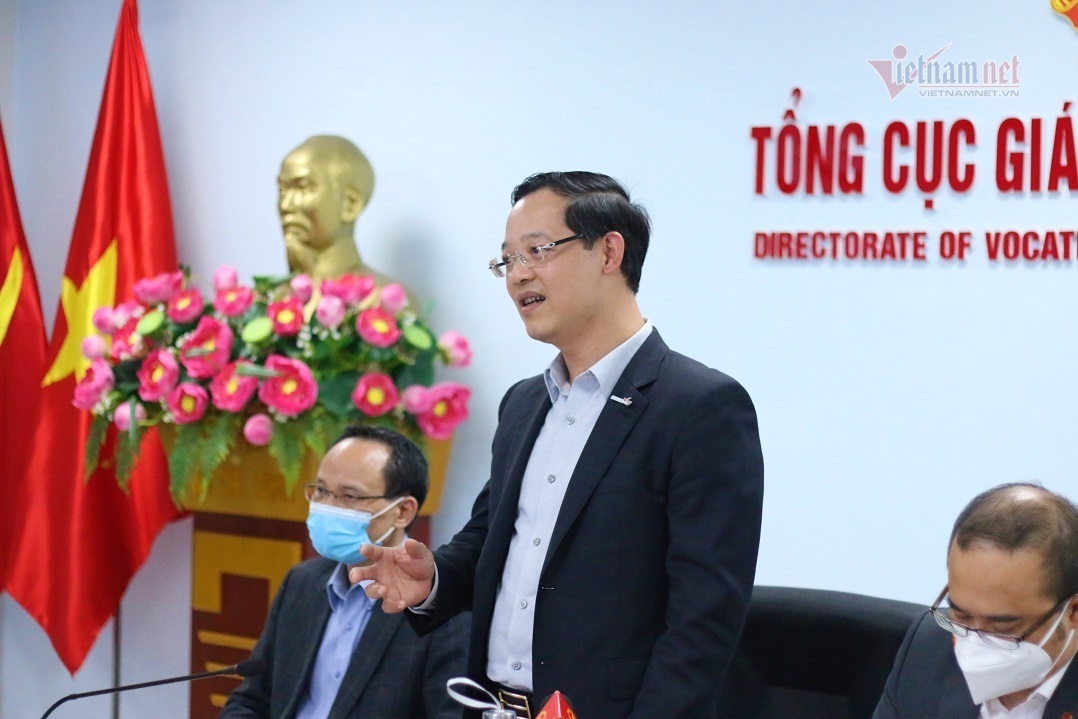
Truong Anh Dung, Director General of the Generate Directorate
The agency recently held a meeting on guidelines for vocational education in the future.
Truong Anh Dung, Director General of the Generate Directorate, stressed that vocational education includes students at primary and intermediate levels and junior colleges, but also workers in the labor market.
Vocational education needs to be organized well to produce skillful workers who meet requirements in the digital era. Among 55 million labourers, only 24.5 percent own degrees and certificates, according to a report.
Dung said the Ministry of Labor, Invalids and Social Affairs (MOLISA) is building a strategy on vocational education to be submitted to the Prime Minister for approval this month. It’s expected that the vocational education scale will double or triple in the future and 20 new professions will be added to the training program.
There are 1,908 schools and training centers in the vocational education system, including 900 junior colleges (3-year training) and intermediate schools (2-year training), and 1,000 continuation education centers.
Regarding the training scale, the system enrolls 2.2 million students every year. Of this, only a quarter have regular training at intermediate schools or junior colleges, while the remaining follow the continuing education mode.
Currently, 24.6 percent of workers are trained workers. Vietnam wants to increase the proportion but the current vocational education scale cannot do this.
“Around 2.2 million workers receiving training every year is a very small figure for a country with 55 million laborers and 100 million people,” Dung said, adding that in Australia, one in every four people take vocational training.
“We plan to enlarge the vocational education scale by twofold in the next five years and three times in the next 10 years,” Dung said.
He said that vocational education in the immediate time would follow a model with quality classifications.
There will be a group of high-quality trainees, and some will be skilled enough to walk abreast or even outstrip counterparts in developed countries.
“We will train 20 professions and occupations that will serve economic development in the future. These professions do not exist in the current labor market,” Dung said.
To reach the goal, the general directorate is restructuring the network of vocational education establishments.
As for the criticism that Vietnam has too many vocational education establishments, Dung said it has nearly 1,900 vocational education establishments and nearly 100 million people, while Australia has a population of 28 million but has 2,400 establishments.
The typical characteristic of Vietnam’s vocational education system is that most are state-owned. The goal is to reduce the number of state-owned establishments, merging ineffective establishments and increasing the number of private ones.
The general directorate is designing a new strategy, including one on improving workers’ skills.
In addition to producing more high-quality workers, Dung said Vietnam needs to provide vocational education in rural areas, to ethnic minorities and the poor.
Solutions are also needed for reform of curricula, teaching staff and managerial officers; and improvement of facilities at schools.
According to Dung, the value of vocational education and workers’ skills will contribute to higher productivity and competitiveness.
Vu Xuan Hung, Director of the Regular Training Department, said the vocational education system aims to catch up with other countries but also outstrip them in some professions.
He said that vocational education needs to help workers master 4.0 technologies in their careers.
“They may have different professions, but all the professions have relations with technology. Our idea is equipping them with technological knowledge that will help them satisfy requirements in all business fields and professions,” he said.
Thanh Hung

Vocational education: VN prepares the best workers to welcome both small and large companies
Vocational education needs to be organized well to produce enough workers who meet requirements set by investors in the ongoing FDI wave, experts have said.

1,000 labourers affected by Covid-19 receive free technical vocational training
Deutsche Gesellschaft für Internationale Zusammenarbeit (GIZ), the German development agency, in cooperation with Vietnam’s Directorate of Vocational Education and Training and departments of Labour invalids and Social Affairs in eight cities